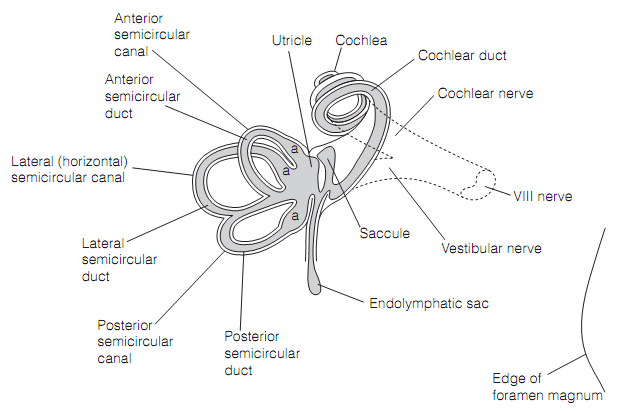Vestibular labyrinth
Within the bony labyrinth, that contains all the inner ear structures, lies the membranous labyrinth, which is a sensory epithelium subserving hearing and balance as shown in figure. The vestibular labyrinth, concerned with balance, holds of two otolith organs, the utricle and saccule, and the three semicircular ducts. The sensory organization of the otolith organs, the macula, that detects linear acceleration, is horizontal in the utricle & vertical in the saccule for a person standing upright. In this place the utricle is sensitive to tilting of the head (pitch and yaw) while the saccule is sensitive to vertically acting forces like gravity. The three semicircular ducts are around mutually orthogonal. Each holds a sensory structure, the ampullary crest that detects angular acceleration in the plane in which the duct lies. By using the signals coming from all six semicircular ducts the brain evaluates the magnitude and direction of the angular acceleration of the head.

Figure: Left vestibular labyrinth viewed from above. The membranous labyrinth is shaded. Here a= ampullae of the semicircular ducts.